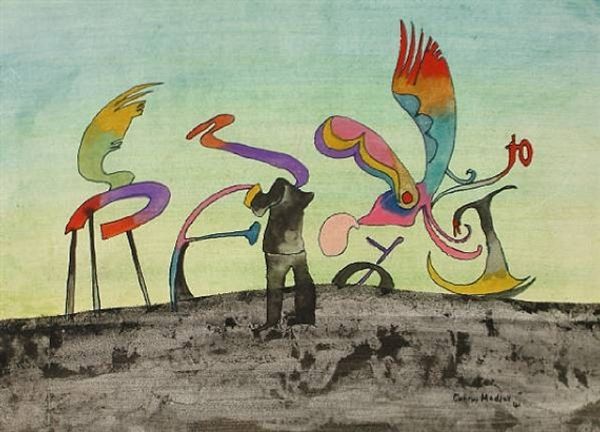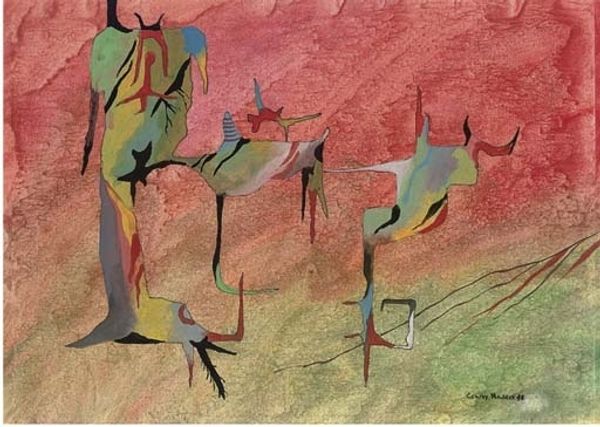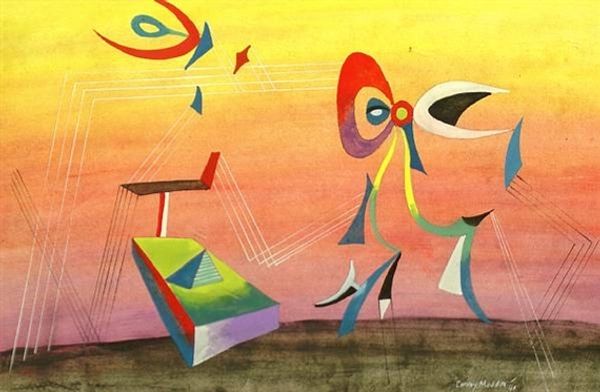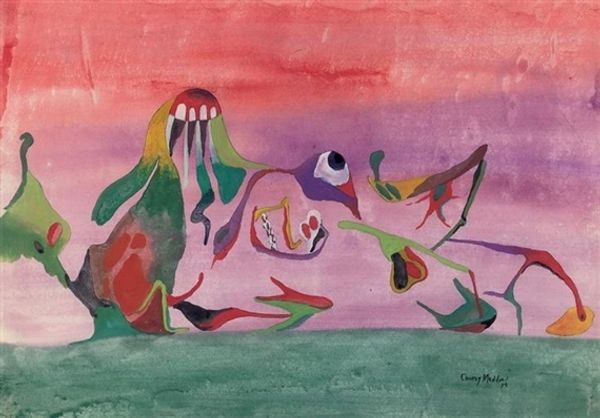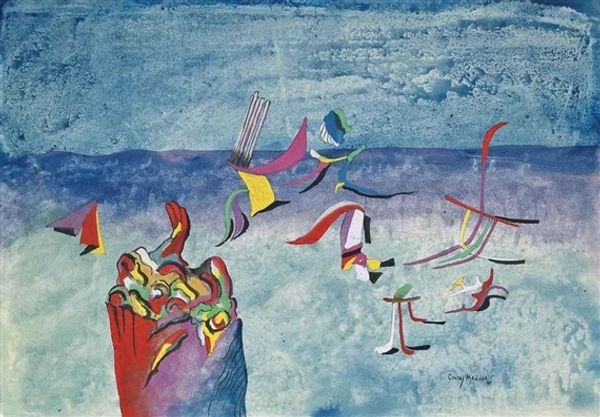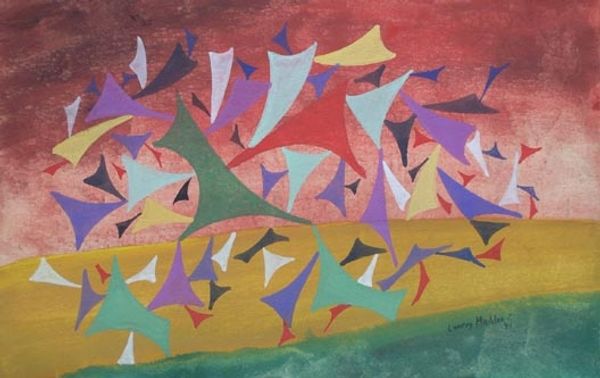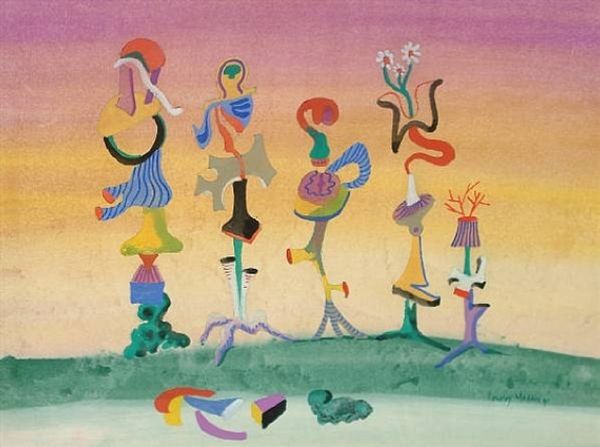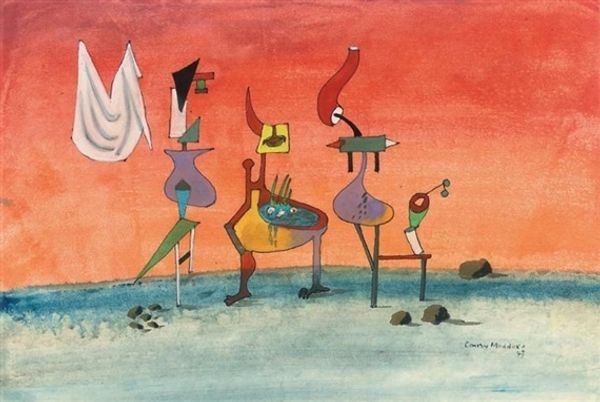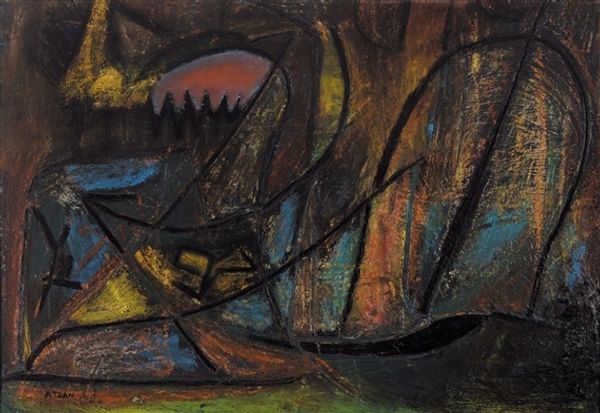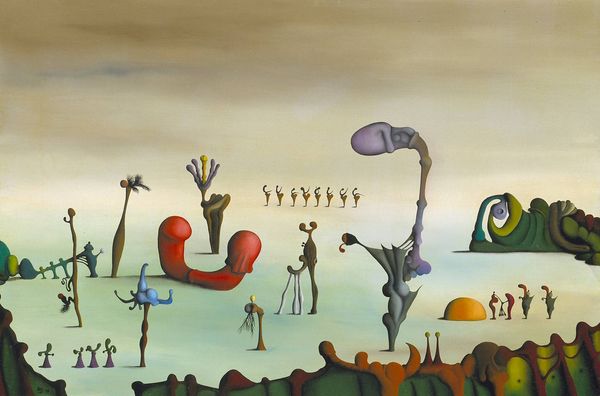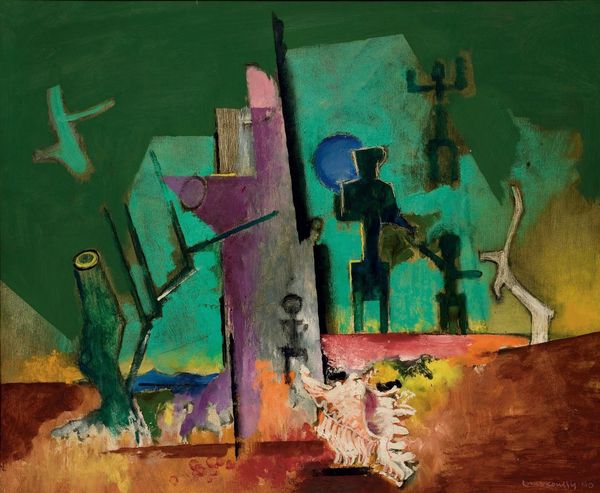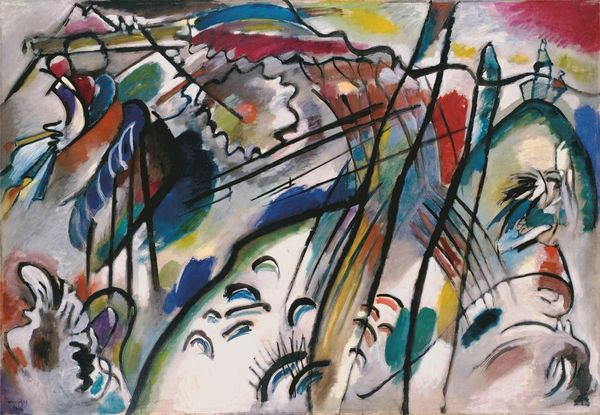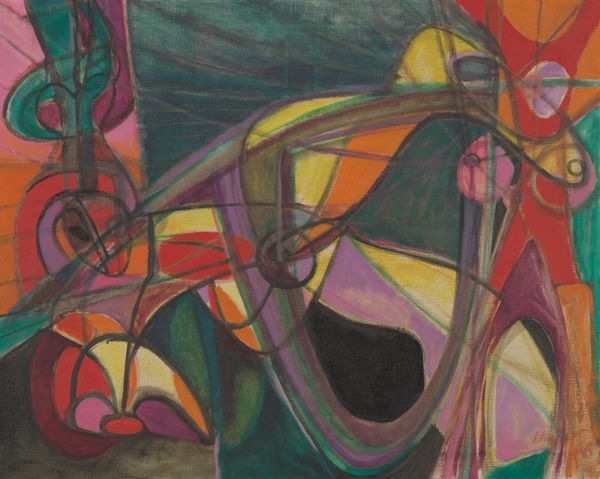
painting, watercolor
#
water colours
#
painting
#
watercolor
#
abstraction
#
line
#
surrealism
Copyright: Conroy Maddox,Fair Use
Curator: Conroy Maddox offers us a particularly striking example of his work with this 1941 watercolor painting, titled "Total Liberty." Editor: My first impression is… strange and ethereal. A landscape, perhaps? But abstracted and dreamlike, almost as if these geometric shapes are rising up or floating just above that rugged-looking hill. Curator: Maddox was deeply entrenched in the Surrealist movement, so "dreamlike" hits the nail on the head. Surrealism thrived on disrupting conventions and societal expectations. Think of what was happening in Europe at this time—a world plunged into war. Maddox was vehemently opposed to totalitarianism and believed in artistic freedom as resistance. Editor: That historical context really changes how I see this. Knowing that, the title “Total Liberty” feels much more potent. Look at the watercolor – you can see the layered brushstrokes, creating different tones and a palpable sense of the material itself being worked. The brown tones feel grounded while the orange background sets a specific stage. It does feel deliberately "staged," almost a tableau. Curator: Yes, and Surrealism rejected reason, favoring irrational juxtapositions. "Total Liberty" can be viewed through that lens. We can see a very pointed political commentary in his composition, contrasting it against his firm views. Editor: And consider the actual artistic choices made here. It's not accidental; look at the way those sharp lines intersect with those curving organic shapes, how they both support and contradict the feeling. The artist made careful choices in materiality to explore the depths of freedom against authoritarianism. Curator: Certainly. These visual paradoxes challenge us to rethink our own relationship to social structures and the very meaning of the phrase "total liberty". Maddox wasn't merely painting pretty pictures, but was actively engaging in cultural criticism. Editor: Exactly. What initially seemed like abstract forms, starts to reveal layers of resistance, thanks to the way Conroy used these common, and accessible materials. The layering itself reflects building, changing and resisting! It reminds us that even humble mediums can speak truth to power. Curator: The work encourages viewers to reflect on the meaning of political resistance itself, I would argue, then, rather than simply appreciate aesthetics alone. Editor: That gives us plenty to ponder, thank you.
Comments
No comments
Be the first to comment and join the conversation on the ultimate creative platform.
